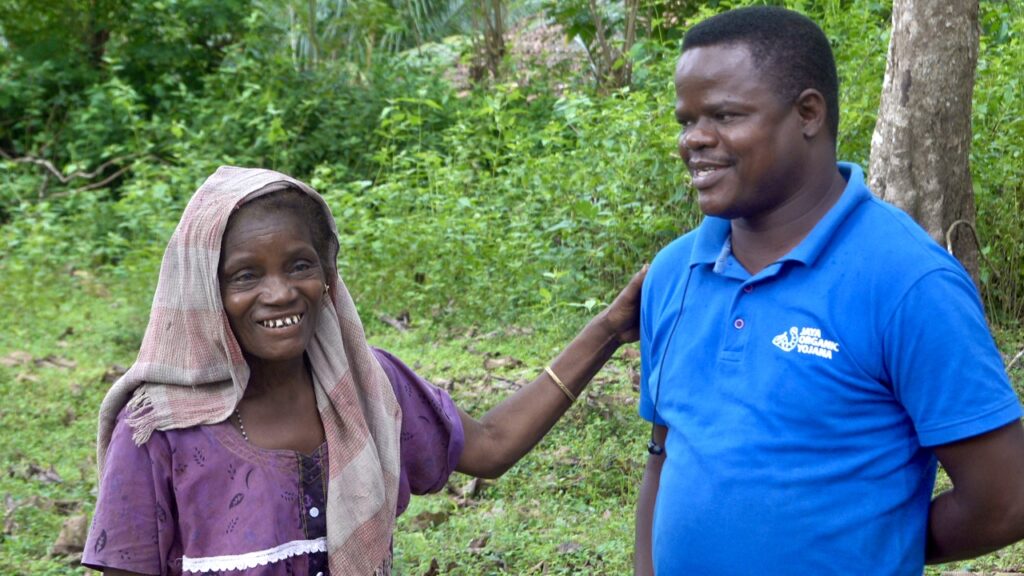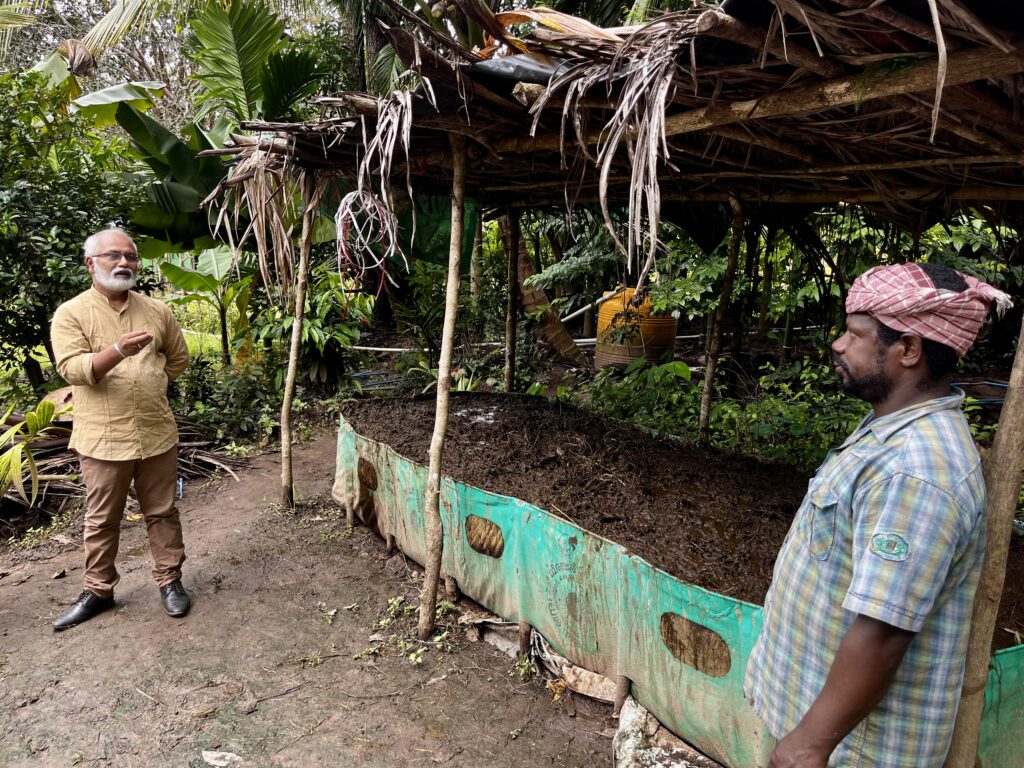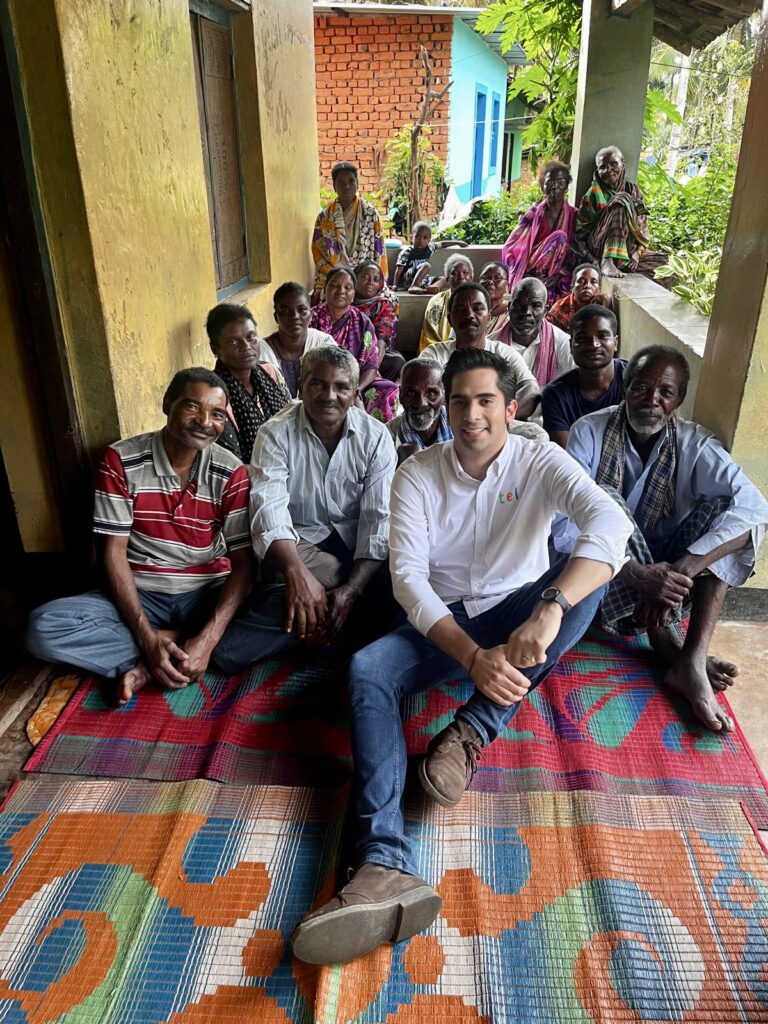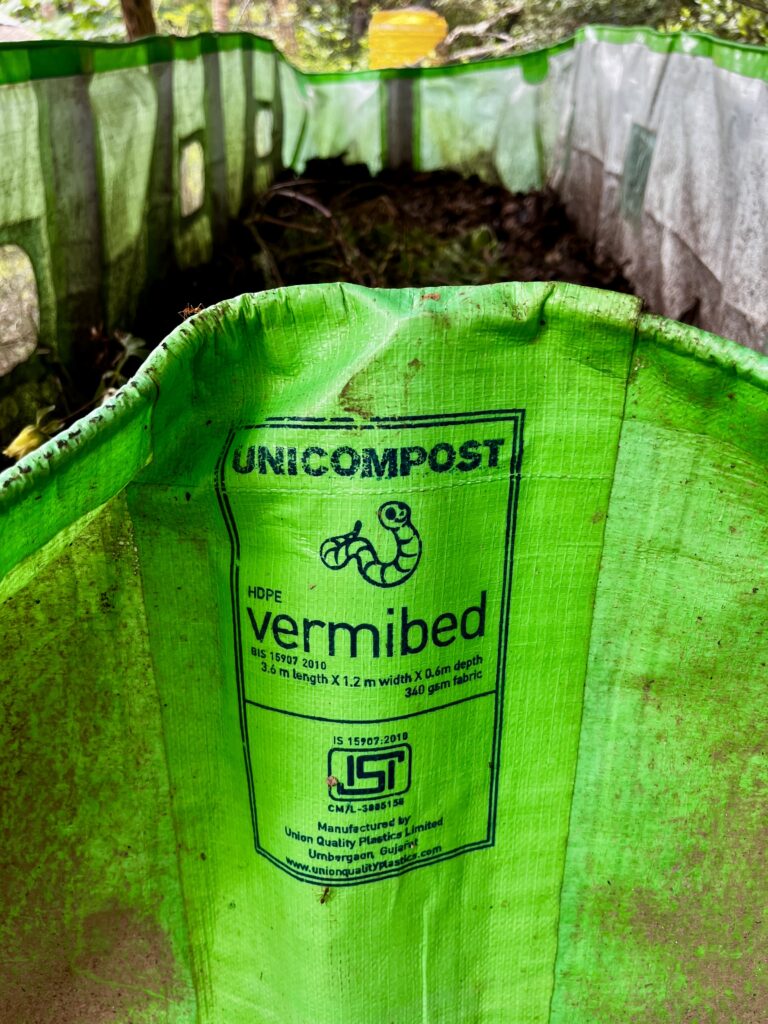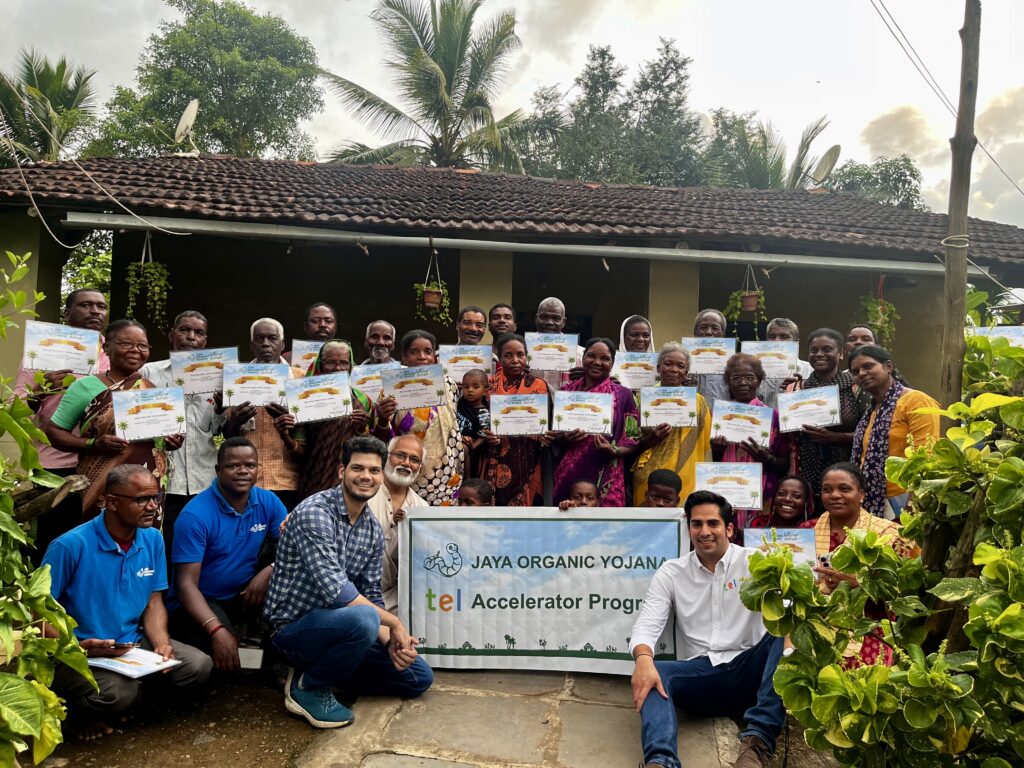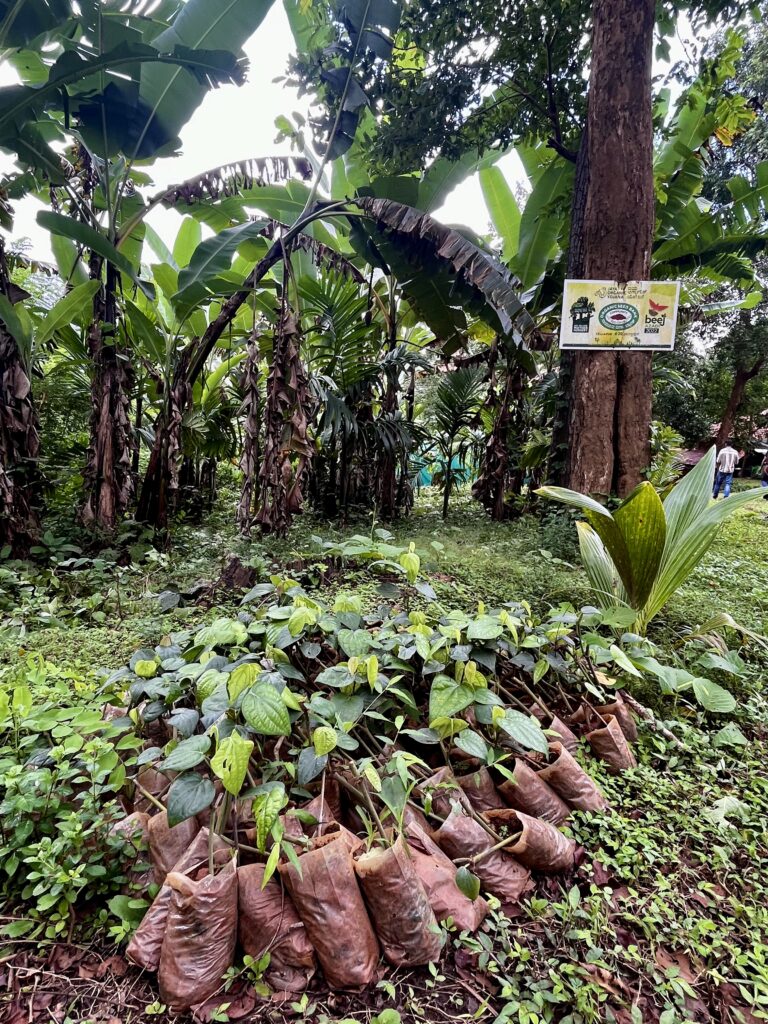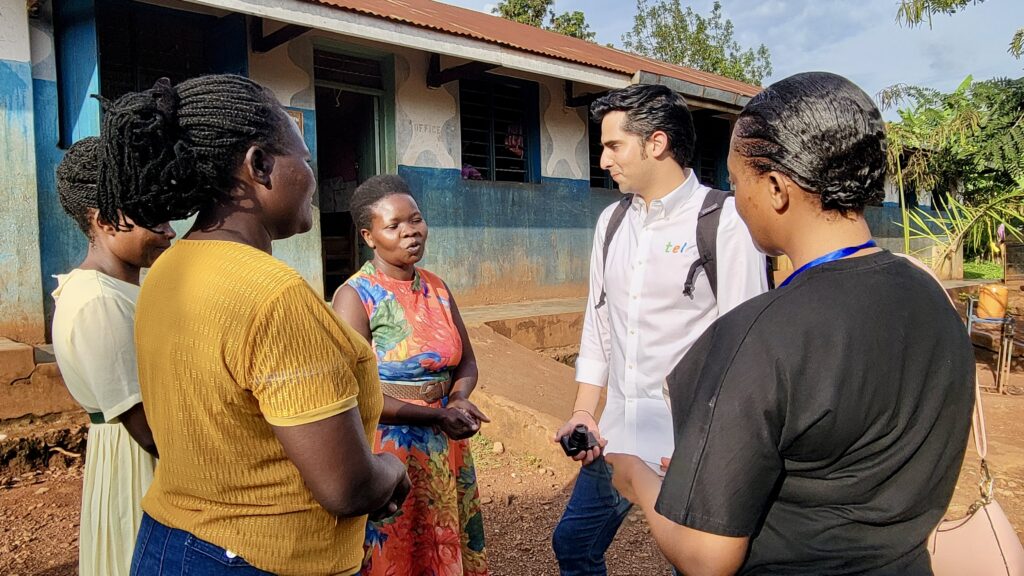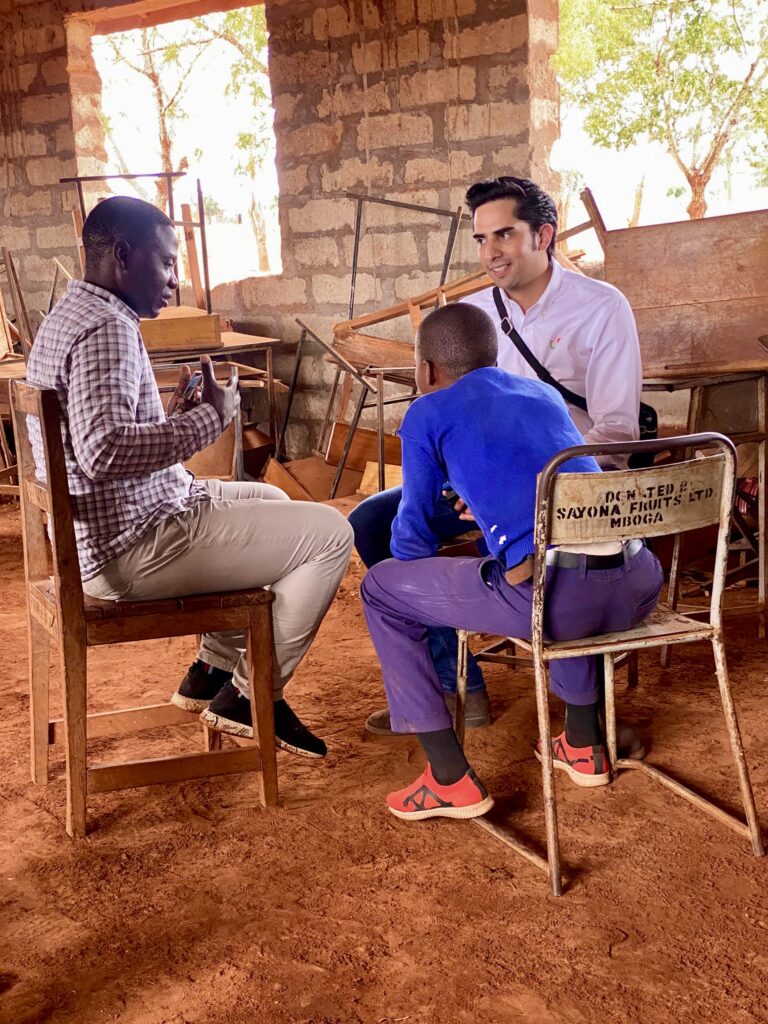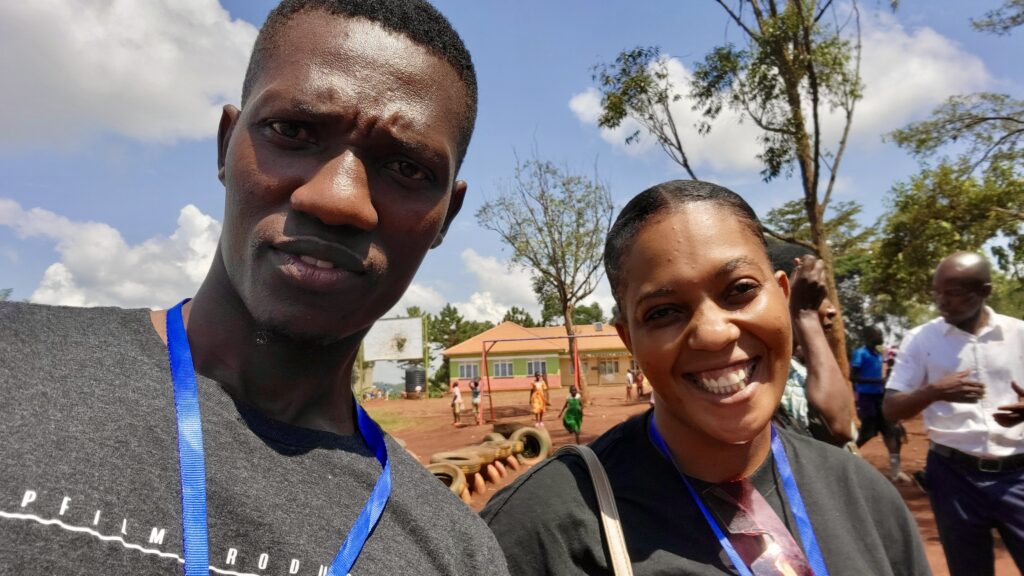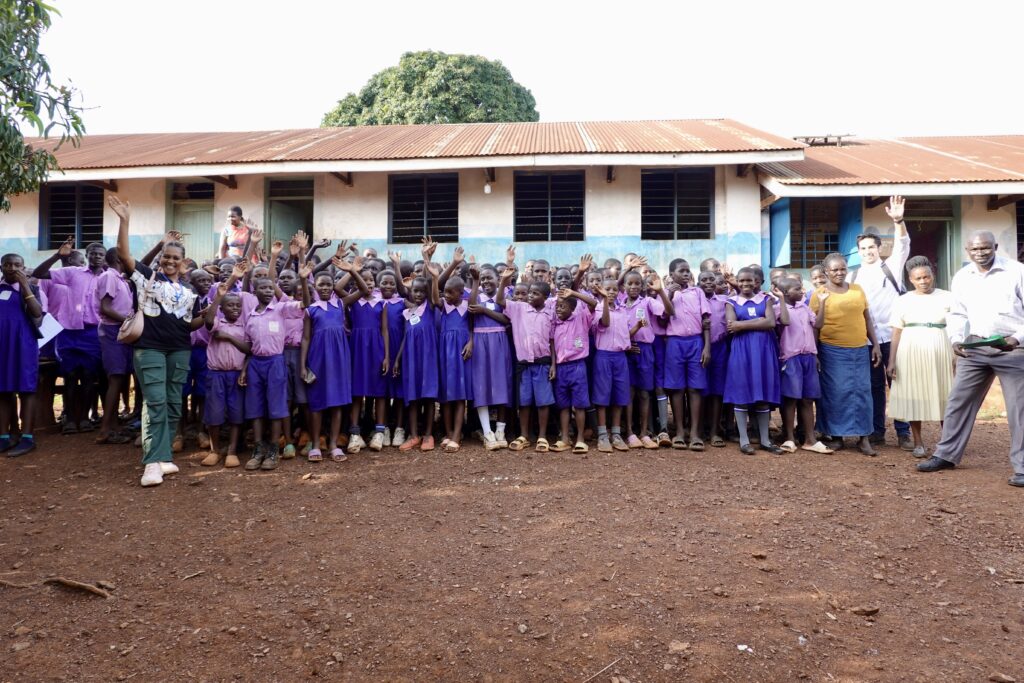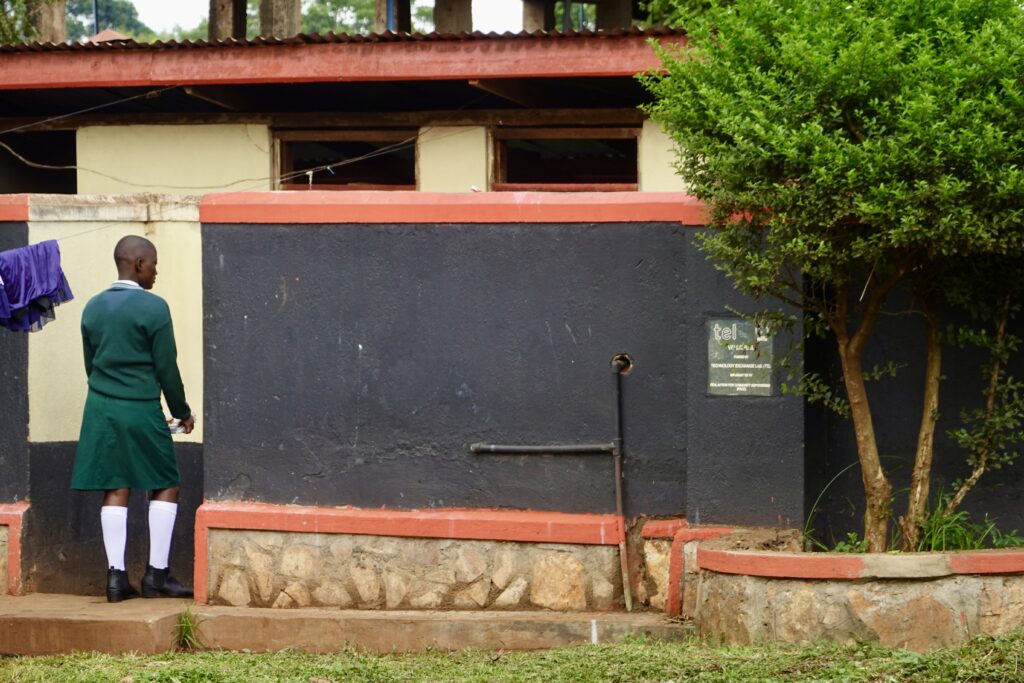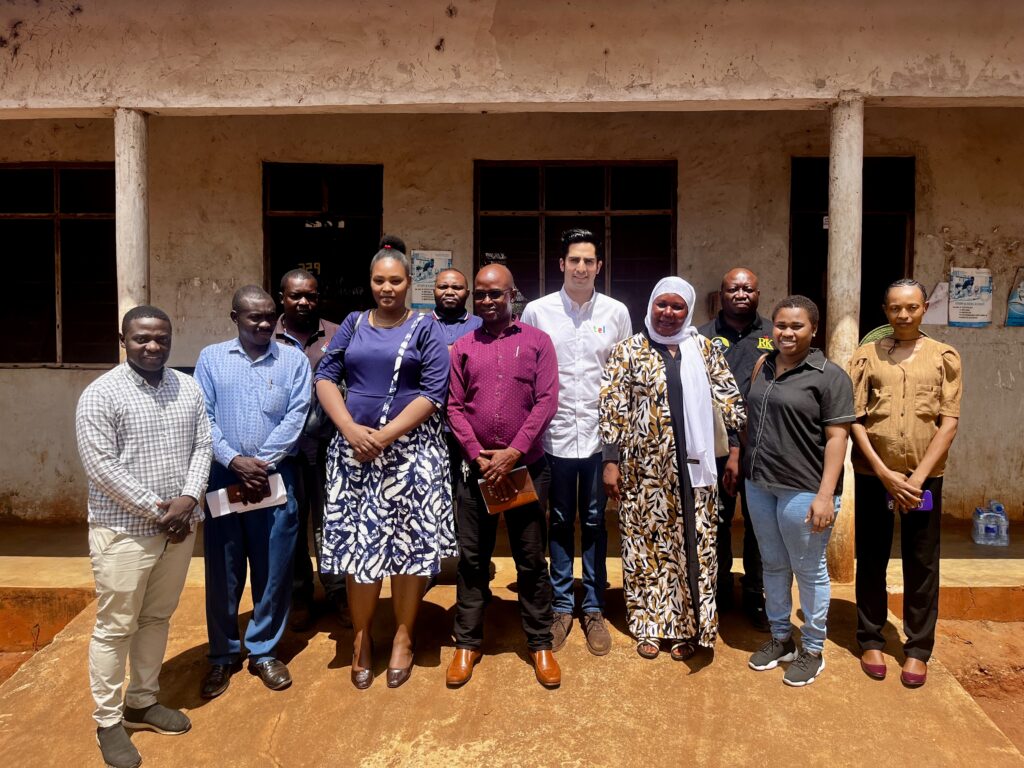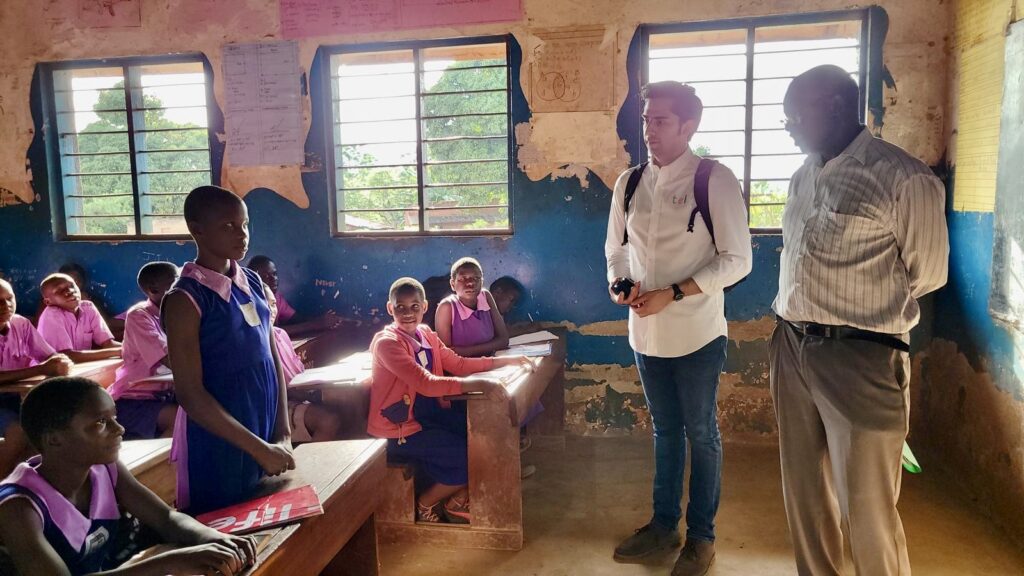Estimated Reading Time: 4 min
Click to download article
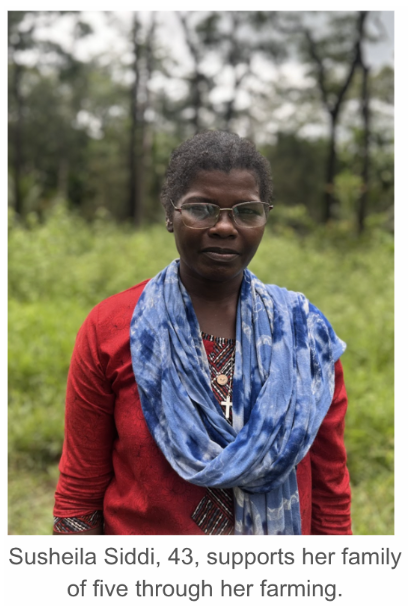
“I used to feel like I had no way out. Back then, I earned just 15,000 INR (approximately 178 USD) per year, struggling to make ends meet. Now, with the tools we truly needed and the support of people who care, I finally feel in control. I can now see a better life for me and my children—a life I never thought possible. Today, I’m making over 50,000 INR (approximately 600 USD).”
These words from Susheila Siddi, a farmer from the community of Yellapur, India, capture the heart of TEL’s Project Accelerator. Her story is a reminder of how powerful technology can be when it is truly integrated with the local community. It’s not about imposing solutions from the outside; it’s about listening, learning, and applying technology in a way that resonates with the unique challenges people face. During my visit to her community and others where we are working with, I’ve witnessed firsthand how this approach leads to lasting, transformative change.
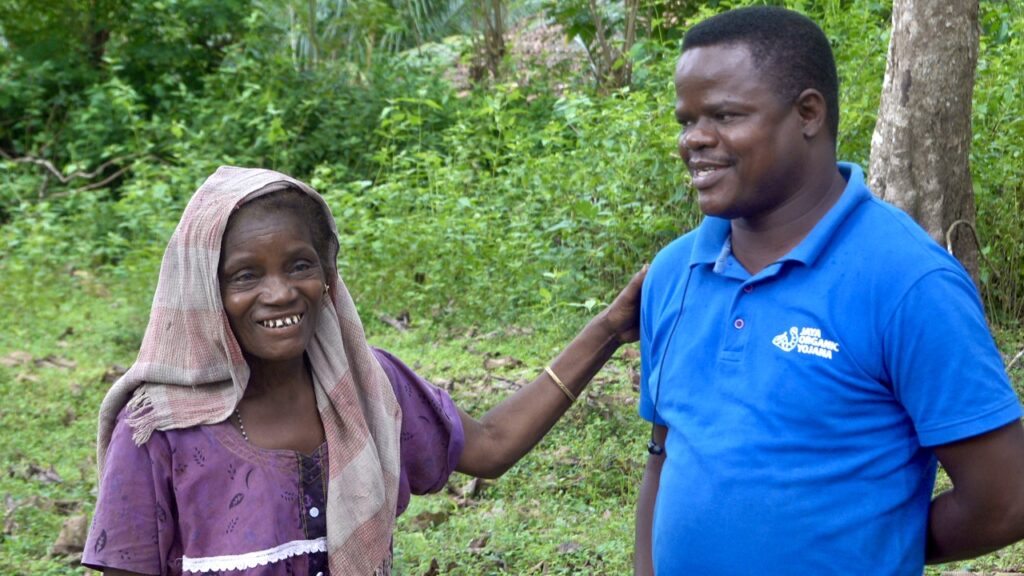
INDIA
In Yellapur, a small village in southwest India, I had the opportunity to witness how community-driven technology is creating a lasting impact. Working with the local organization Jaya Organic Yohana (JOY), led by Smita Shah, and the Siddi tribe, a community descended from the Bantu-speaking people of Southeast Africa, farmers have begun using sustainable practices like vermiculture and efficient irrigation systems to restore soil fertility and manage water resources. When Susheila and other farmers started their training, they were not just adopting new technologies—they were gaining the ability to take control of their futures. The results speak for themselves: not only are farmers improving their livelihoods and multiplying their yield, but they are also playing an active role in protecting the environment. So far this year, they have sequestered more than 500,000 kgs of CO2, contributing to climate change mitigation.
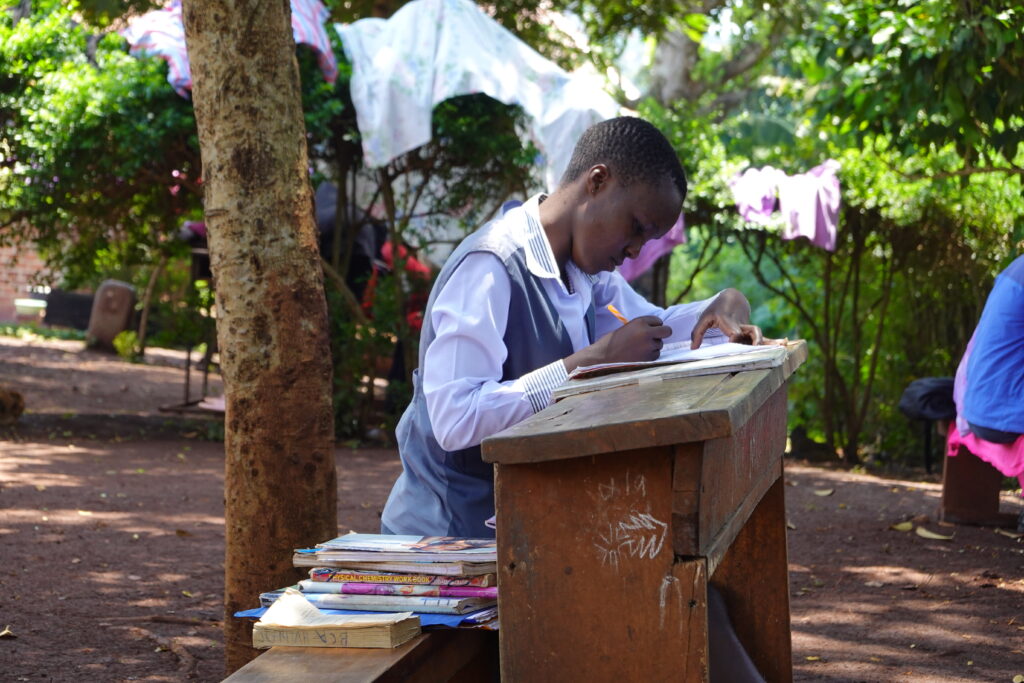
UGANDA
In Jinja, a city known as the source of the Nile River, our program Her Health, Her Future continues to grow. Many young women in Uganda miss up to 24 school days each year due to menstruation, and 65% can’t afford sanitary pads, often resorting to cloth, toilet paper, or leaves. In partnership with RACE Uganda and Days for Girls International, we’re empowering young women with the tools and knowledge they need to manage their menstrual health and stay in school. The program has already resulted in a 12% increase in school attendance and an 8% rise in graduation rates for female students. We are working to expand this program throughout Uganda and beyond. Her Health Her Future is transforming the lives of young women by ensuring they stay focused on their education and future. As Namukose Annet, participant of the program said: “I feel more comfortable coming to school now, it’s one less thing to worry about, and I feel motivated to do well in school.”
While visiting Jinja, I met Lydia Kobusingye, the leader of RACE Uganda. Her dedication to helping her former school and others has been key to the program’s success. She is a true example of how local leaders can create lasting change and empower their communities to thrive.
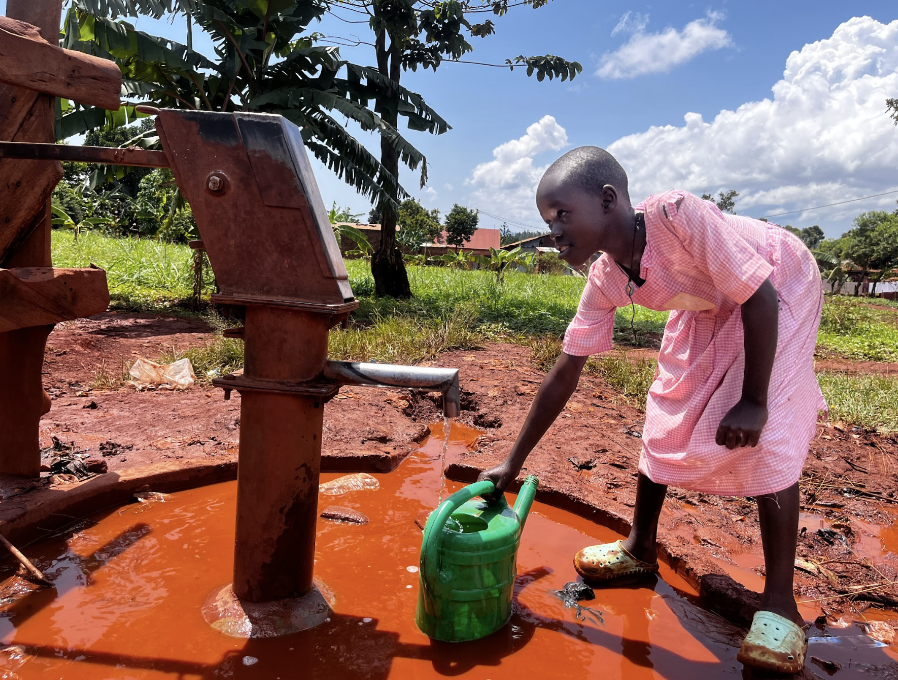
Tanzania
My last stop was Msata, a small village about three hours outside Dar Es Salaam. Here, we’re working to scale Her Health, Her Future and tackle challenges similar to those in Uganda. I met Cecilia Mwakajila, the founder of Early Education Awareness, a local organization we’re partnering with. As a schoolteacher, Cecilia understands the daily struggles her children and other students face. Together with local leaders, including the support from the mayor, Shamsi Chamu, our goal is to improve health and education outcomes in Msata. By providing access to technology for clean water and education, we’re helping communities build a foundation for long-term growth.
These experiences reaffirm a core belief at TEL: low-cost technologies can significantly improve lives and a big part of their success depends on collaboration with community-based organizations that understand local needs. We’ve seen firsthand that when end-users are well-informed, they achieve better outcomes than top-down decision-making. Local organizations, with their deep understanding of context, are best positioned to implement and sustain these technologies.

We must not forget that over 2.2 billion people still lack access to safe drinking water, and more than 700 million people live on less than $1.90 a day! The challenges are daunting, but the right technologies, combined with local collaboration, offer a clear path forward. Without the involvement of local communities and organizations, these technologies will remain underutilized and ultimately fail to create lasting change. While recent advancements in AI and machine learning are impressive, we must not lose sight of the millions still struggling with basic human needs. These innovations can play a crucial role in bridging the gap and improving lives.
At TEL, we believe that true progress comes when technology is introduced in partnership with those it is meant to serve. By working closely with local organizations, we ensure that solutions are embraced, sustained, and scaled in ways that bring real benefits to the communities that need them most. Together, empowered by technology, we can shape a future where everyone, regardless of where they live, has access to the tools and opportunities they need to thrive.
What if every community could harness the power of technology, alongside their own knowledge and insights? Imagine the possibilities when local voices are not just heard, but are at the center of change.
